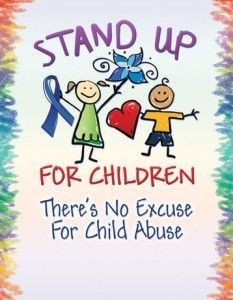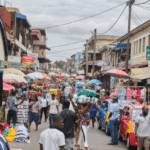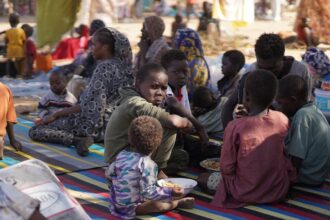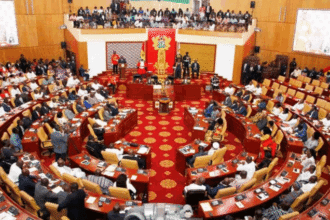Generally, children are protected by law against all forms of abuse and neglect. Section 71, 91 and 92 of the Criminal Offenses Act, 1960 (Act 29) as amended in 1998 now referred to as the Criminal Offenses Act, 1960 (Act 29) criminalize the abandonment or exposure of a child to danger, abduction of a child and a range of sexual offenses that could render a child vulnerable to HIV infection. The 1998 amendment strengthened the law to include procuration, causing or encouraging the seduction or prostitution of a child under sixteen years and allowing persons under sixteen to be in brothels.
Child abuse takes many forms including sexual abuse, the age of sexual responsibility was raised from fourteen to sixteen years in the 1998 amendment to the Criminal Code, (Act 29) meaning the age for statutory rape referred to as defilement is now sixteen years. The penalties for rape were increased in the 1998 amendment, the penalty is now a minimum of five years in imprisonment and a maximum of twenty-five years without the option of a fine. The penalty for defilement is now a minimum of seven years and a maximum of twenty-five years without an option of a fine. Sexual offenses were made gender neutral. A new offense of indecent assault was also introduced. Indecent assault is an assault of a sexual nature which does not amount to rape, defilement or unnatural carnal knowledge.
Recent studies by UNICEF suggest that sexual abuse of children goes on in some public schools and there is a need for sexual protection in the school setting. Due to the culture of
silence with respect to matters of reproductive health and children it is not easy to assess the cases of sexual abuse in schools. Apart from abuse of a sexual nature, there is physical violence, abandonment, abduction and child stealing as well as exploitation of children through child labour, which constitutes abuse. Exposure to drugs, alcohol and cigarettes and other risky behaviour amounts to child abuse and is rampant especially in the urban areas. The Criminal Offenses Act and the Children’s Act provide the legal framework to check child abuse and the Domestic Violence and Victim Support Units of the Police provide focal points for complaints and counseling.
Child Commercial sex workers
Children on the streets aged between 10-17 years often engage in commercial sexual activity and the living conditions of street children facilitate sexual exploitation. Studies have shown that child prostitution is probably on the increase but because identity is kept secret and activities are carried out in secret, data are scarce on the subject. Thus there are no reliable estimates of the number of children involved. Prostitution is seen as lucrative work to top up income from other street activities as no investment is required. Children engage in commercial sex for economic survival.
Child labour
Child labour in Ghana presents great challenges, for although the Children’s Act provides ages for admission to employment, proscribes labour which exploits the child by deprivation of health, education or development, working children are a common phenomenon. The Ghana Statistical Service in 2003 revealed that 39 percent of children between 5-17 was engaged in economic activity. Child labour in the urban areas includes street hawking, portering of heavy loads, shoe shining, supporting people with disability, cart pushing and working in eating places.
Rural child labour includes shepherding of cattle and sheep, fishing, crop farming and stone quarrying. Other forms of child labour exist which are hidden from the public eye such as child domestic servitude, child prostitution, illegal mining, drug peddling and pick-pocketing.
Child domestic workers
The practice of children working in domestic settings as maids, child minders and general house helps takes root from customary servitude. It is one of the most common forms of child employment and affects girls more than boys. What started as a form of customary fosterage has now become commercialized. It has long been considered as part of a socialization process and is accepted as training for young girls who will ultimately manage their own homes. However, child domestic work has ceased to be a family affair. Children work in households which are not their own. One percent of children canvassed in the Child Labour Survey were child domestic workers.
The issue of child domestic workers is very complex as it goes on behind closed doors. Research commissioned by ILO/IPEC reveals that the two regions with the greatest concentration of child domestic workers are Ashanti and Greater-Accra Regions with duration of the employment of children ranging between two and ten years. Only 37 percent of those studied attended school, mainly at the primary level. The push factors are parental neglect due to large family size, the need for self-preservation, abduction and sale as well as occupation by birth, where children are born into domestic servitude. Recruitment is diverse but mostly engineered by parents, who constitute 51 of the total and intermediaries constituting 18 percent.
It is clear that as society develops and more and more women leave the home to work, the demand for child domestic workers will increase. There is therefore an urgent need for protective safety measures for the children who are at risk in the home despite the legal framework.
“Kayayei” — Girl child porters
In Ghana, women are predominantly active in the informal sector and petty trading is primarily the occupational province of women. The system of head portering is a petty form of trading and has been a part of the informal trading business for generations. The demand for female porters is determined by congestion in markets and petty trading activities that requires the rapid movement of wares from one place to another. Portering is done by both sexes of all ages, however in recent years there has been a large influx of girls, mostly from the Northern Regions, serving as porters. They are known as ‘kayayei’ and do this work as a way of raising capital to start a more profitable venture or to acquire the necessary items to enter marriage.
Kayayei are girls usually under the age of 18 who are not indigenous to the major cities and regions where they work. The underlying causes why the girls migrate to urban areas to work include poverty, refusal of parents to support them through school, abusive sociocultural practices and death of parents. The portering business is determined by the need to acquire capital, not available in the rural areas. The girls are often at the mercy of patrons, older boys who rape them and protect them from other rapists at night for a small fee. They are most vulnerable to unexpected pregnancies, sexually transmitted diseases and HIV/AIDS.
Street children
In recent times, the public has shown much concern about the increasing involvement of children in various street income-earning generating activities. Urbanization and other socioeconomic factors are creating the phenomenon of street children. There are two types of children on the street: those who are on the street trading during the day but go home to sleep at night and those who work on the street and at night sleep in front of shops, markets and other such open places. The phenomenon of street children thus refers to the latter category of children who live on the streets and have made it their permanent sleeping place.
In the recent child labour survey conducted by the Ghana Statistical Service, of the 17,034 children interviewed, 7,120 (41.8 percent) were aged 5-9 years, while 6,737 (39.5 percent) were between the ages 10-14 and 3,177 (18 percent) between 15-17 years. Thus, about four-fifths (81.3 percent) of the children were aged 5-14 years. Greater Accra has the highest proportion of street children followed by the Ashanti and Brong-Ahafo Regions due to high demand and poverty. Results of the child labour study revealed that 71 percent of children was illiterate. They gave reasons for not going to school or dropping out as inability to pay school fees, loss of interest in school work and the need to work for financial support for themselves and their families. About 78 percent of the children wanted Government to provide them with free education. The underlying causes for the growing numbers of street children include rural/urban drift, the poverty of parents, the survival of the children and the harsh economic conditions prevailing in the deprived areas they come from.
Child trafficking
Trafficking occurs internally and across borders. The elements of child trafficking are the conclusion of a transaction, the handing over of a person to a third party with or without a fee for the purpose of exploitation. The intervention of an intermediary is a common factor and the motive is to exploit.
The majority of persons trafficked within the country are children, particularly girls between the ages of 7-16 years who come from northern parts of the country. Boys aged 10-17 years are lured to the mining and coastal areas to engage in illegal mining and to become fisher children. Methods of acquiring children include the following: abduction, outright sale, bonded placement, deceit of parents or guardians and coercion.
It is estimated that 40,000 children are trafficked internally. Underlying causes that contribute to child trafficking include the tradition of migration for socio-cultural and economic reasons and growing urbanization leading to the break-down of traditional family systems. Other factors are the low education level of parents, insufficient educational opportunities, which create frustration; family instability and poverty together with the ever increasing demand for cheap, exploitative labour, ignorance and the weak legal and regulatory framework.
The child rights violations of child trafficking include trauma, inability to communicate, long working hours, health hazards, cruel and inhuman treatment. Others are the lack of education, sexual exploitation and the risk of pregnancy. The Human Trafficking Act 2005 (Act 694) seeks to prevent, reduce and punish human trafficking as well as provide for rehabilitation and re-integration of victims.
The enactment of the law was necessary because although the Criminal Code creates offenses associated with the subject, these relate to the perpetrator rather than the victim whose rights have been violated. The Act provides for the rehabilitation and re-integration of victims of the phenomenon. It is an office to convey, send to or receive any person for purposes of trafficking.
This extends to intermediaries and the penalty is a minimum of five years imprisonment without the option of a fine. Ancillary offenses include the supply and conveyance of a trafficked person and there is a duty to provide information on trafficking to the police. The Act also established a Human Trafficking Fund and the inter-ministerial cooperation required to co-ordinate matters concerned with human trafficking is addressed by the Human Trafficking Management Fund.
Estelle Matilda Appiah works for the Ministry of Justice.














